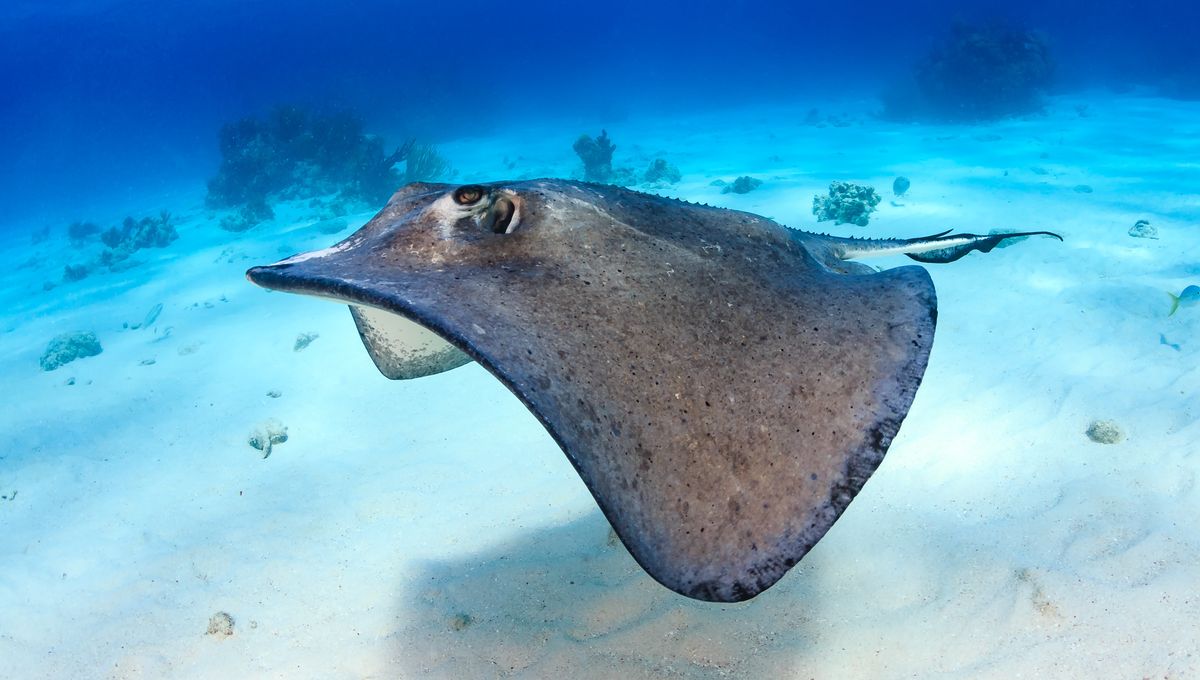
Sharks and rays have been found to have an XY sex chromosome system superficially like our own, but with its own unique features. It’s also older than that of any other vertebrate.
There are lots of ways to determine sex besides the XY system used by non-monotreme mammals, where XX (usually) denotes females and XY produces males. Male birds are ZZ and females ZW. Some reptiles do the same, some use XY while others dispense with sex chromosomes altogether and use environmental cues to determine sex.
Fish don’t necessarily feel the need to spend their whole lives as male or female, with many changing from one to the other at some point. Some have just one sex chromosome, while others seem to rely on their surroundings alone. However, cartilaginous fish (sharks and rays) broke away from bony fish 440 million years ago, and have been doing their own thing since.
Despite the respect their epic survival might be expected to induce, sharks’ sex chromosomes have not been studied much, but new research changes that.
Professor Shigehiro Kuraku of Japan’s National Institute of Genetics and co-authors investigated the sex determination system of five shark species, three rays, and an elephant fish (Callorhinchus milii), which also belongs to the cartilaginous fish class.
They found that all of them follow an XY system, where females have two of the same type of chromosomes, but males’ chromosomes are different. The researchers also found some common features between distant branches of the chondrichthyes family tree, suggesting these aspects of sex determination are at least 300 million years old, long preceding those of any other vertebrate we know. However, several invertebrate classes have sex chromosomes that date back 350 to 500 million years.
On the other hand, despite sharks’ usual evolutionary approach that when you are onto a good thing, stick to it, the authors found some differences. Red stingrays (Hemitrygon akajei) even have two distinct X chromosomes, which the authors call X1 and X2.
The decline of the male chromosome in humans has been much reported, and something similar is happening in at least some sharks. The authors note an absence of conserved sequences on the Y chromosomes of three shark species. “These results indicate that the Y chromosomes in these species lost a large fraction of their ancestral genomic contents and have independently accumulated different types of repetitive sequences,” they write.
The evolutionary benefit of the Y chromosome shedding so many genes is unknown, but at least we know it doesn’t affect species survival. Indeed, the authors conclude, “sex determination in sharks and rays is accomplished by the X-linked genes that have never been documented as master sex-determining genes.” Meanwhile, the Y chromosome doesn’t appear to have much role at all. It’s apparently the absence of a second X that makes a male shark male, not the presence of a Y; two likely candidates for the relevant X chromosome gene have been proposed.
One of the challenges for any species using chromosomes to determine sex is how to control the expression of genes on the sex chromosomes that are needed by both sexes. If X-chromosome genes were expressed equally, females would get a double dose of the proteins they code for, with serious consequences for one sex or the other.
Forty years ago, scientists learned most mammals address the issue by not producing mRNA for one X chromosome. Until recently, we thought this was universal, but last year, chickens and platypuses were found to use a different solution.
Kuraku and coauthors’ work indicates sharks may have a different approach too.
Most mammals silence one of the replicated chromosomes as a whole. Chickens (and probably other birds) do it on a gene-by-gene basis, preventing the expression of some genes on one copy of the Z chromosome and other genes on the other one. Moreover, they do it when translating mRNA to proteins, rather than when transcribing the mRNA.
Among sharks, the authors report that some X chromosome genes were expressed more in females, by a factor of around 1.5 times. The authors note this is similar to the expression bias of Z chromosome genes in chickens. The findings contradict the hypothesis that incomplete dosage compensation is something that happens in ZW chromosome systems, but not for XY.
Putting these two observations together, it appears possible that “sex determination in sharks and rays may be underpinned by the X-dosage-dependent mechanism, which is the first evidence among vertebrates, with unique molecules distinct from other vertebrate lineages,” the authors write.
The study is published in Proceedings of the National Academy of Sciences.
Source Link: Sharks And Rays Have The Oldest Vertebrate Sex Chromosomes – And They’re Like No One Else’s